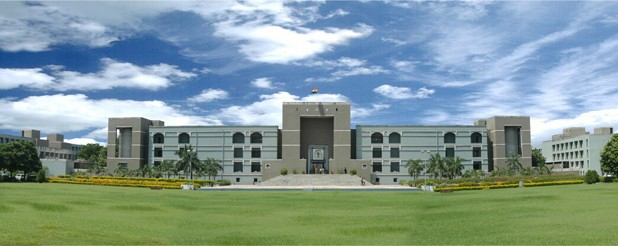 Dispatches
DispatchesIndian law students are reporting for JURIST on law-related developments in and affecting India. This dispatch is from Vedika Chawla, a second-year student at the National Law University, Delhi.
Last Thursday, the Gujarat High Court Advocates’ Association (GHCAA), the lawyers association in India’s western state of Gujarat, declared an indefinite strike and passed a resolution to that effect in protest of the proposed transfer of Justice Nikhil S. Kariel from the Gujarat High Court to the Patna High Court, the top court in the far eastern Indian state of Bihar. The GHCAA strongly opposed the transfer, stating that it was “not in the right taste” and offended the rule of law as well as independence of the judiciary.
This strong and extremely unusual response from the Association came after the courtroom of the Chief Justice of the Gujarat High Court was flooded by the members of the GHCAA voicing their concerns about the decision of India’s collegium (the body that makes recommendations for the appointments of judges in the higher judiciary). The GHCAA declared that it held Justice Kariel in high esteem, saying he is one of the “finest, honest, upright, and unbiased” judges whose integrity and honesty was being vouched for by the entire Bar in one voice. The advocates went so far as to say that they were “mourn[ing] the death of the independence of the judiciary.”
In line with their declarations, the members of the GHCAA resolved:
To abstain from court proceedings instantaneously i.e. from 2:30 PM today and to further have a representation sent to Hon’ble Chief Justice of India and other Judges of the collegium and other Hon’ble Judges of this court who are now presiding as Judges of the Supreme Court of India to reconsider the recommendation of transfer of Hon’ble Justice Kariel.
Interestingly, the live telecast of the proceedings of the Gujarat High Court court was cut off a few minutes into the incident on Thursday. It did reveal the Chief Justice of the Gujarat High Court Justice Aravind Kumar inquiring of the advocates about the notification of the transfer: “When did you get the notification? I have no idea.”
The incident brings to the forefront the functioning of the Supreme Court collegium system in the appointment, elevation, and transfer of judges. The collegium consists of the Chief Justice of India and the four next senior-most Judges of the Supreme Court. The system relies on the collegium making recommendations to the President of India for the appointment of judges. The decision in Supreme Court Advocates on Record Association & Anr, v. Union of India (1993) bound the President to those recommendations. The case is the second among a series of cases, popularly referred to as the Three Judges’ Cases, that defined and structured the collegium system. Before these recommendations regarding appointments and transfers of judges are finalized, the collegium is required to consult with the Chief Justice of the High Court at the center of the discussion. The consent of the judge in question is also required.
The events that occurred Thursday suggest that the described system is not being followed.
It is important to realize that Justice Kariel’s recommendation was one of the three transfers recommended by the new collegium in its first meeting after Justice D.Y. Chandrachud took oath as the Chief Justice of India. Those apprehensive about calling that decision arbitrary, especially in light of the public support that the new CJI enjoys, have been left perplexed about the true intention behind this move. The process of judicial appointments is meant to be one in public interest. Hence, it requires transparency and integrity. Yet, the Chief Justice of the Gujarat High Court seemed clueless about the recommended transfer, signifying that perhaps a practice-driven system for the appointment of judges is not enough.
While there have been efforts in the past by the government to replace the collegium system with a National Judicial Appointments Commission, they have failed due to the concern of interfering with the separation of powers in the governmental structure. However, it might be time to consider an overhaul of the collegium and the introduction of a more formalized, just, and regular system to ensure accountability and transparency. Decisions—and their rationale—need to be made public. Due process needs to be preserved. The Constitution of the collegium might also need reconsideration, especially now that it has been established that the Bar is a strong and active stakeholder in the process. It might as well include representation from the Bar and give a more influential say to Chief Justices and Judges from High Courts in matters concerning them.
Like several other High Court lawyers’ associations, the GHCAA has a long history of voicing its position on the protection of the independence of the judiciary, the rule of law, and civil liberties. It has also previously taken a strong stand on instances where the police transgressed its powers and other issues of protection of the judiciary. But the question to consider is whether, in the absence of such an extraordinarily proactive association of lawyers, the judicial system affords sufficient safeguards for its own. Judges called upon to uphold the spirit of the Constitution often find themselves crushed under the weight of an arbitrary system.
Why should the Bench have to rely on its Bar for its security?

